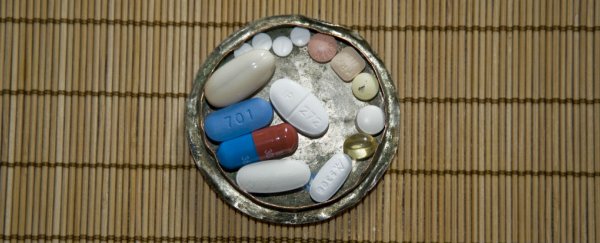We're making great progress in the march towards the successful prevention and cure for HIV/ AIDS, with a new vaccine trial about to kick off in the US, and the recent discovery of an existing drug that drags the dormant HIV virus out of hiding, but it's not all positive news.
Over the past few years, reports from the US Centres for Disease Control and Prevention (CDC) have shown that despite the public having better access education and outreach than ever before, HIV/AIDS diagnoses are becoming more frequent in some of the younger populations around the country. Their solution? Attempting to safeguard a portion of the population via an HIV prevention pill, which would hopefully lower the odds of the virus spreading.
Back in 2010, the CDC released a report stating that between 2008 and 2010, there was a 22 percent increase in new HIV infections among 13 to 24-year-old homosexual boys, with this demographic making up more than 25 percent of all HIV diagnoses in the US that year.
Last year, a similar report supported these findings - when the instances of HIV infections were compared across all demographics in the US, it was the young, male, gay population that saw the biggest increase in diagnoses.
So last week, the CDC advised that in order to combat this this trend, one in every four sexually active gay men should start taking Truvada - a daily HIV prevention pill that's been shown to reduce the risk of HIV transmission via sex by up to 90 percent.
Right now, only people who are classified as being in a 'high risk' environment have been prescribed the HUV prevention pill. As German Lopez reports for Vox, the CDC considers risky behaviour as including "sex with an HIV-positive partner, sex with multiple partners, anal sex without a condom, and sharing needles to inject drugs".
Instead the idea would be to add low-risk people into that equation too. And that's not just 25 percent of the male gay community - the CDC wants one in five users of injected drugs and one in 200 sexually active heterosexual men to also take Truvada (also known as PrEP). You know, just in case.
Just as the vaccine for measles, mumps, and rubella is able to prevent these diseases from spreading if enough people have it - a concept known as 'herd immunity' - the idea is that by putting this preventative method out into the community, statistically speaking, the disease will have less room to move through the population.
Sounds pretty simple, right? Who wouldn't want to reduce their risk of contracting HIV/AIDS, particularly if you're subjecting yourself to high-risk situations such as unprotected sex and needle-sharing? Well, despite research showing that Truvada can keep people 100 percent HIV-free - even in high-risk environments - and the fact that the drug has been on the market in the US since 2012, with trials now underway in parts of Africa, Asia, South America, and Australia, the prevention pill remains a tough sell.
Many researchers are hesitant to overstate the potential of the daily drug in combatting the spread of HIV because of how fast its efficacy falls when a pill is skipped, and it's been criticised for the fact that users have been tempted to forgo condoms (not recommended.)
Not only that, but according to Lopez at Vox, an alarming number of health care providers aren't even aware that the drug exists. "A 2015 survey found 34 percent of primary care doctors and nurses have never heard of the drug," he writes. Perhaps even more alarming is the fact that a huge proportion of people who have already been infected don't even know about it.
"The CDC estimates that more than 50 percent of youth who are HIV-positive don't know they have the virus, making it more likely they'll inadvertently transmit the disease," says Lopez.
The proposal for a small portion of society to bite the bullet and add another daily pill to the pile for the good of the herd makes sense, but it's no easy task, particularly as the drug has already seen a backlash within the most at-risk portion of the population. If those who have to think about HIV aren't convinced, how can you make low-risk individuals want to get involved?
It's something that will likely never happen - not according to the CDC's exact proposal, anyway - but the reality is that HIV is on the rise in young people, and we have a perfectly good way of protecting ourselves. "Many people who can benefit from PrEP aren't taking it," says the CDC. "If more health care providers know about and prescribe PrEP, more HIV infections could be prevented."
